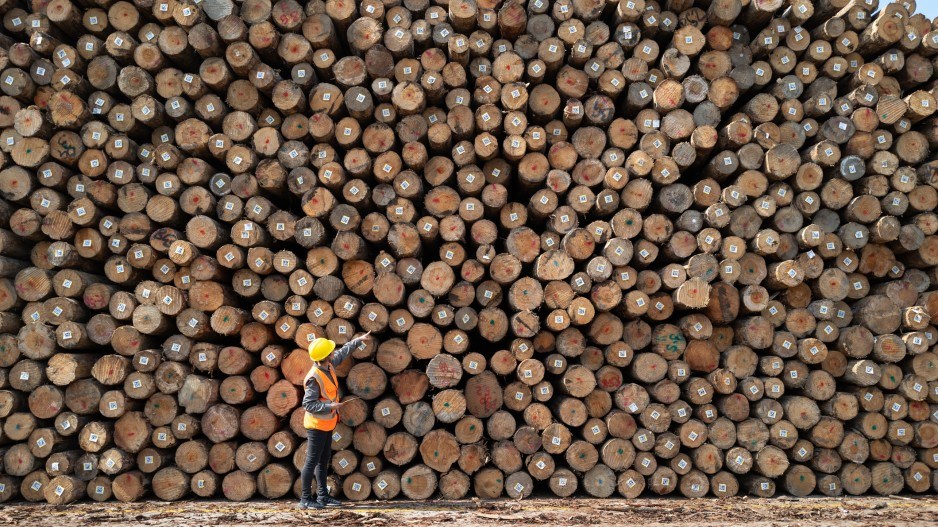In Vancouver, leaders and changemakers will be coming together at the GLOBE Forum 2024 to explore solutions to reimagine our economy, and to look at innovations that go beyond sustainability to regeneration.
Globally, the shared challenge of moving towards a net-zero economy and reducing emissions is vital. In British Columbia and Canada, we have a unique opportunity with a sustainable and regenerative natural resource like forestry.
Canadians are witnessing first-hand the impacts of climate change – record-setting wildfires, expanding drought conditions, flooding and other hazardous weather events. We are not alone: Every country will be impacted in some way by climate change, and global efforts are underway to meet this challenge.
Foremost among them being an increased production of renewable energy.
The Canadian forest sector has a critical role to play in meeting this challenge. The forestry industry in B.C. strives to use virtually 100 per cent of every tree. Almost half becomes lumber for high-value wood products, with the balance becoming residual wood chips used to create pulp and paper, packaging, novel bioproducts and bioenergy – a growing part of the bioeconomy.
More deeply integrating the bioeconomy with forestry is a key strategy for conservation, fire resilience and sustainable land management. By carefully managing forests, extracting value from every part of a tree, using wood residues and waste for value-added manufacturing and energy, while replanting trees, it's possible for B.C. and Canada to deliver a vibrant bioeconomy, renewable energy growth and ecosystem health.
New technologies have already been developed to better manage forest health and decarbonize operations. Bioproducts are being developed that can replace non-renewable materials in items like medical face masks, asphalt for roads, and natural-based glue and adhesives for wood panels in houses and buildings. Advancements in mass timber are having a greater footprint on city skylines, with taller wood buildings offering solutions to challenges with affordable and climate-resilient housing.
Each year brings more examples of the innovative partnerships and projects that are possible. For example, in Prince George, Canfor is finding new ways to reduce natural gas use at its pulp mill by partnering with Chilliwack’s Teralta Hydrogen Solutions. FPInnovations and key industry players are extracting specialized fibres and components from cellulose that can be directed to multiple applications, including the replacement of single-use plastics and other non-renewable packaging derived from fossil fuels.
How do we move forward to further develop this potential? We operate a highly integrated ecosystem in the forest sector, and key to this strategy is a healthy primary sector of sawmills and pulp mills. When a pulp mill closes, the result is three to five sawmills also close. If there are no pulp mills, we cannot grow the bioeconomy and develop the value-chain of engineered products and bioenergy that will move us towards a net-zero economy. This includes identifying an acceptable level of fibre availability. Providing fibre certainty for industry creates the conditions for investment and continued operations across the forest sector, which supports families and communities throughout the province.
If we take these steps, a key opportunity that could been realized in Canada are examples of transformative modern facilities. These include modern kraft plants that have been developed elsewhere globally, with the ability to yield increased pulp production, energy self-sufficiency, improved environmental performance, excess production of electricity, and employment opportunities. This can drive the creation of bioproducts as platforms for the growth of a high-value and low-carbon bioeconomy. A project of this nature would generate significant benefits for Canadians and secure the future for our sawmill operations.
To face climate change, we must manage forests with many goals in mind, including sustainability, wildlife and biodiversity, fire resilience, health and safety, cultural values, carbon sequestration, renewable wood products and biomaterials. The forest sector remains a very significant part of B.C.’s economy with expertise, resources, and advancements in new technologies across the supply chain.
As we strive for a sustainable future, we need to accelerate solutions that benefit the planet, communities and our economy. The GLOBE Forum provides a platform for innovators to come together and find these solutions. Advancing innovation requires predictable business models and investment to ensure the sustainability of forest ecosystems while unlocking the vast potential for the benefit of current and future generations.
Linda Coady is president and CEO of the BC Council of Forest Industries and Stephane Renou is president and CEO of FPInnovations.





